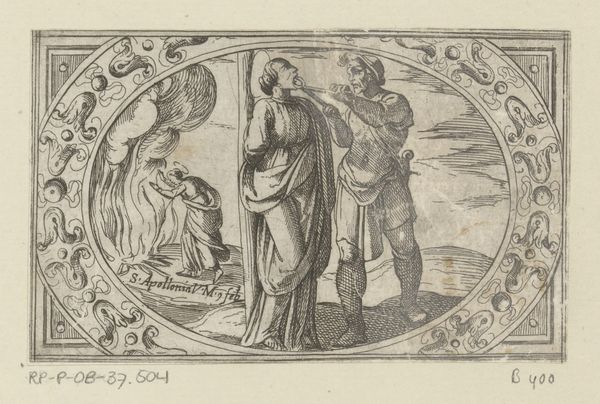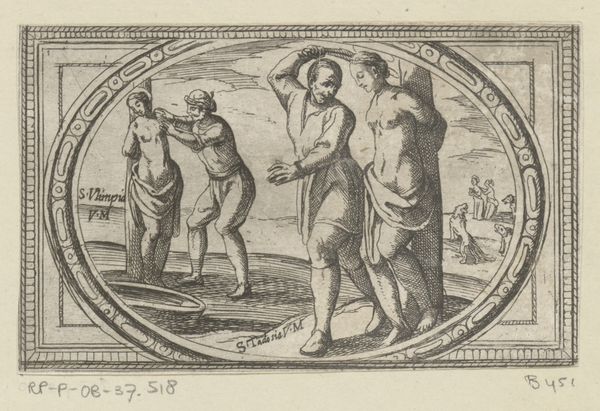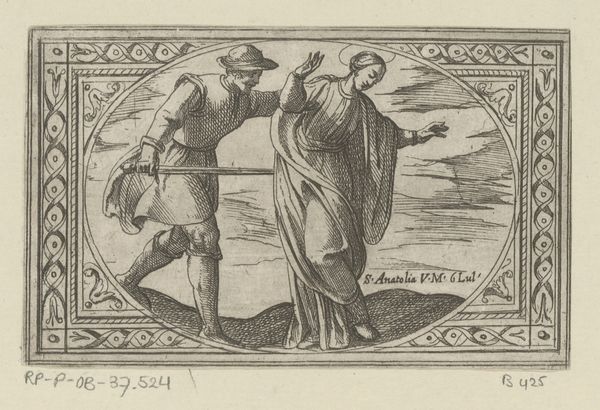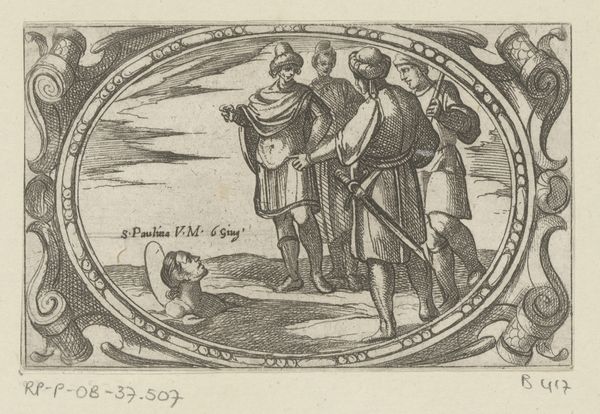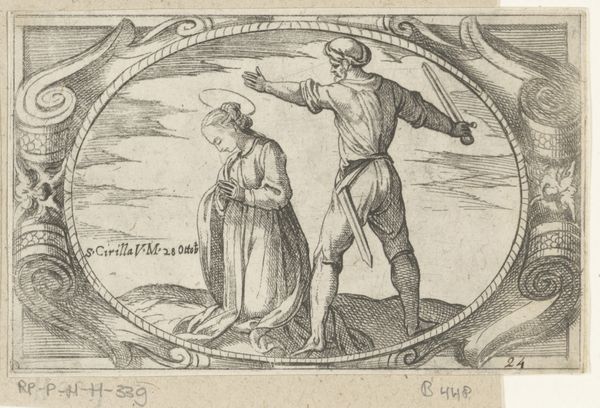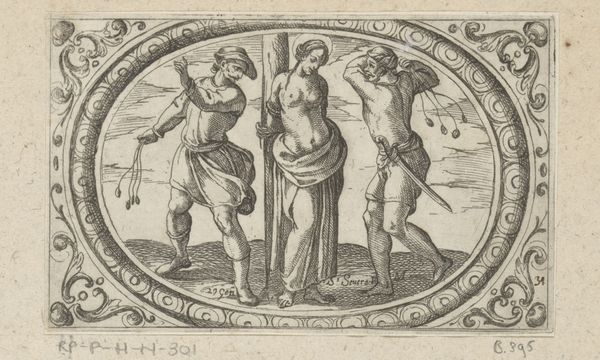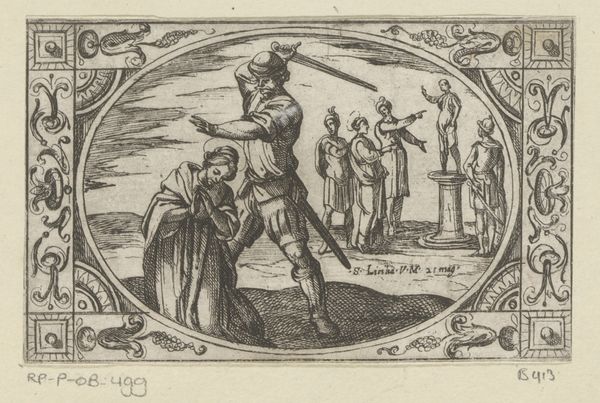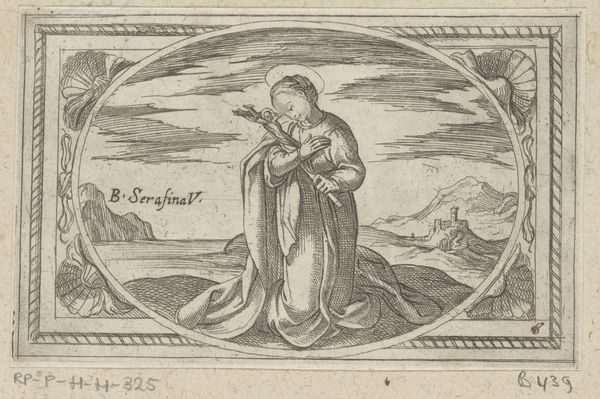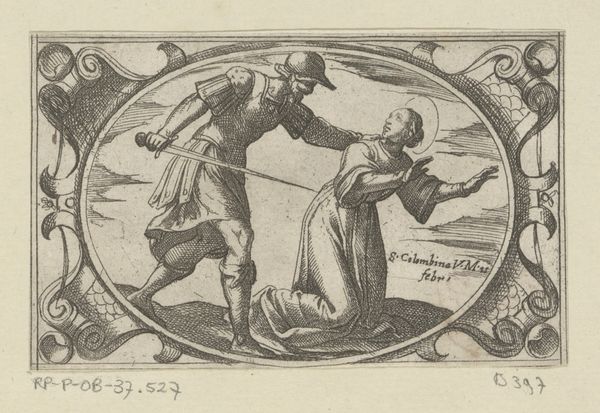
print, engraving
#
baroque
#
pen drawing
# print
#
pen illustration
#
pen sketch
#
figuration
#
line
#
history-painting
#
engraving
Dimensions: height 73 mm, width 114 mm
Copyright: Rijks Museum: Open Domain
Editor: There’s a rawness to this image; it strikes me immediately as quite violent, stark even. Curator: Indeed. What we're looking at is a print attributed to Antonio Tempesta, likely dating between 1565 and 1630. The piece is called "H. Victoria" and currently resides here at the Rijksmuseum. Editor: What really grabs me are the stark contrasts created by the lines – the way the engraver utilized line to illustrate depth. Considering it’s a print, what do you know about its context, or how such images were typically circulated? Curator: Prints like these played a crucial role in disseminating narratives and ideas in the Early Modern period. They were relatively inexpensive to produce, enabling a wider audience to engage with biblical and historical themes. The reproductive nature of prints means Tempesta's visual interpretation could spread and be re-interpreted elsewhere. This specific imagery showing Victoria's martyrdom would have played into specific cultural understandings of female piety. Editor: So this wasn’t necessarily about unique artistic skill. I suppose this wasn't simply about artistic merit, but also mass production. Looking closely, you see the detail in the executioner's clothing but I keep coming back to her calm acceptance even in death; that must've been something, right? Curator: Absolutely, the politics of imagery during that era were tied closely to religious and social didacticism. Presenting Saint Victoria in a serene state underscored themes of faith overcoming adversity; female subjects and narratives became potent instruments within a cultural theatre keen on teaching morality and duty. Editor: So a complex interplay of piety and production… the making of meaning through making multiples. This affects the consumption and meaning people derive from it. It almost turns this saint into something ordinary... Curator: Precisely. The mass dissemination flattens and shapes beliefs at the time. It is a fascinating piece when you view this engraving as an instrument that worked hand-in-hand with other societal structures. Editor: Thanks. I certainly hadn’t considered this perspective prior to our talk, but examining art with its context in production makes it far richer to analyze, indeed. Curator: And for me, looking closely at how historical forces have always molded our artistic views reminds me that engaging with historical prints is just a way to participate in continuous cultural negotiations.
Comments
No comments
Be the first to comment and join the conversation on the ultimate creative platform.
